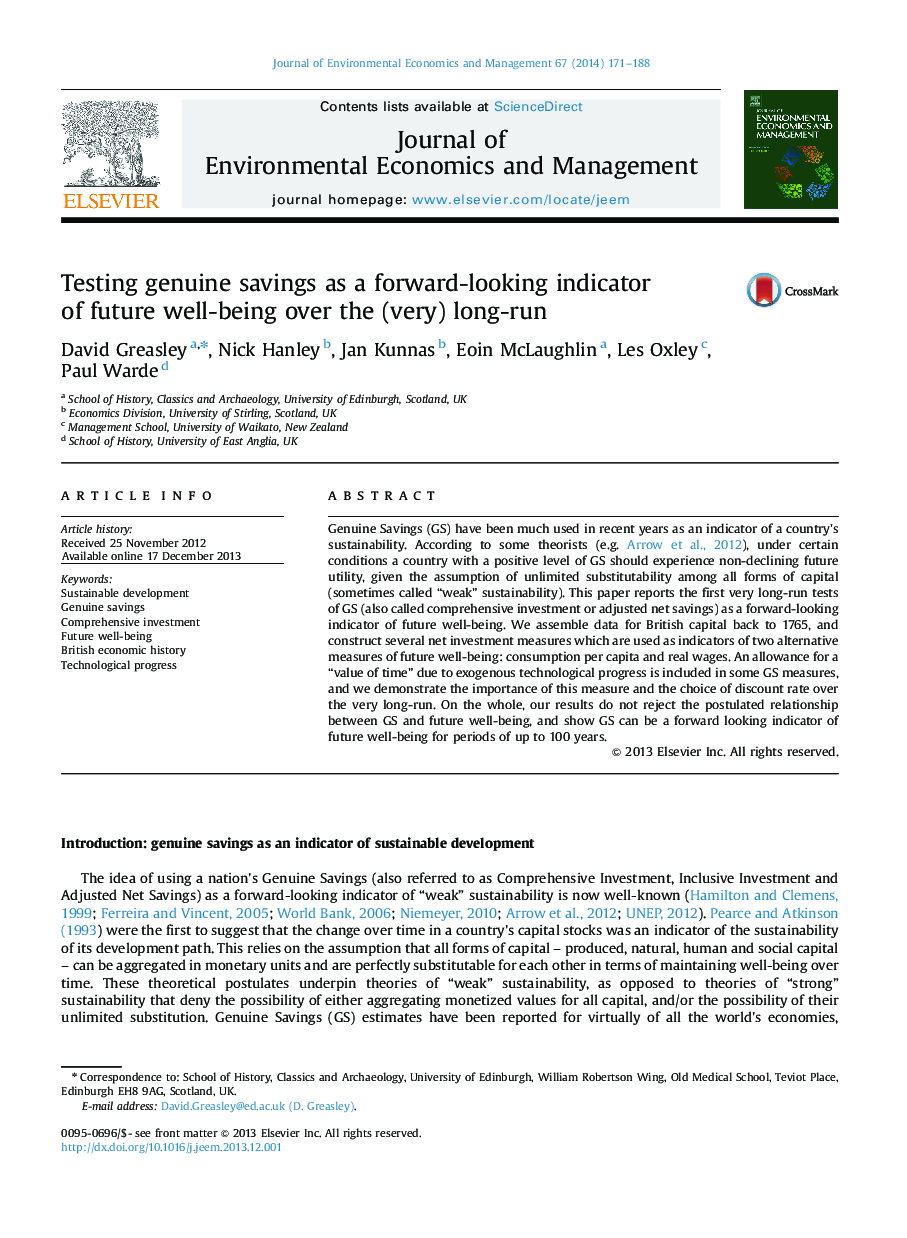| Article ID | Journal | Published Year | Pages | File Type |
|---|---|---|---|---|
| 959185 | Journal of Environmental Economics and Management | 2014 | 18 Pages |
Genuine Savings (GS) have been much used in recent years as an indicator of a country's sustainability. According to some theorists (e.g. Arrow et al., 2012), under certain conditions a country with a positive level of GS should experience non-declining future utility, given the assumption of unlimited substitutability among all forms of capital (sometimes called “weak” sustainability). This paper reports the first very long-run tests of GS (also called comprehensive investment or adjusted net savings) as a forward-looking indicator of future well-being. We assemble data for British capital back to 1765, and construct several net investment measures which are used as indicators of two alternative measures of future well-being: consumption per capita and real wages. An allowance for a “value of time” due to exogenous technological progress is included in some GS measures, and we demonstrate the importance of this measure and the choice of discount rate over the very long-run. On the whole, our results do not reject the postulated relationship between GS and future well-being, and show GS can be a forward looking indicator of future well-being for periods of up to 100 years.
